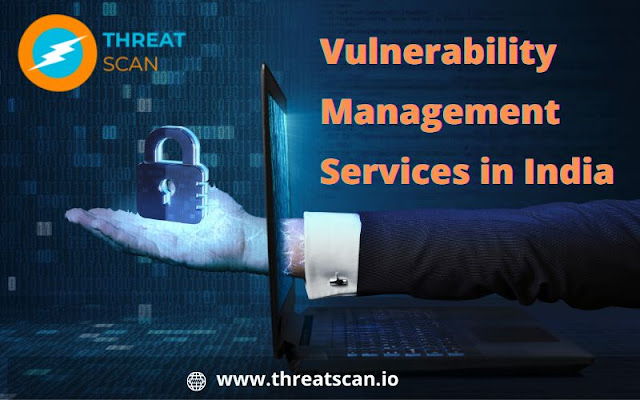Why Does Your Organization Need Vulnerability Management?
What is Vulnerability management?
In IT, vulnerability management is the “proactive approach to
managing network security” by identifying, assessing, managing, and mitigating
flaws in code, design, workloads, systems, and endpoints before criminals
exploit them. Managing vulnerabilities is typically done through automated detection
tools, regular IT and business operations reviews, and human effort. The
proactive approach helps organizations identify and prioritize risks
appropriately and address the vulnerabilities as quickly as possible.
Organizations remediate and address identified vulnerabilities through patching
and other security configuration measures.
Cyber Security Hive offers comprehensive Vulnerability Management Services in India. We also offer other
cybersecurity services like SOC, Vulnerability assessment Penetration testing,
and Dynamic application security testing.
The main types of Vulnerabilities
Today’s organizations face four main types of IT
vulnerabilities:
Network
vulnerabilities:
These are hardware, software, or operational method weaknesses that bad actors
use to access your network.
Operating system
vulnerabilities:
Cybercriminals use bugs or flaws within the OS software code to access
different components of an asset or network.
Configuration
vulnerabilities:
Incomplete installations, poorly executed system changes or updates, and
default deployments make it simple for cybercriminals to exploit the flaws and
attack networks and devices.
Application
vulnerabilities:
These flaws compromise the application’s security for anyone using it, which
criminals may use as an entry point into a network or system.
Mitigating these vulnerabilities is challenging since
organizations use technology throughout their businesses. That’s why a sturdy
vulnerability management process is essential. Yet every business and organization
is different, so learning how to prioritize vulnerabilities can be a crucial
initiative.
Protecting your systems with Vulnerability Management
Cybercriminals look to exploit discovered vulnerabilities to
cause financial or reputational harm to a business. Vulnerability management
will protect your systems, networks, and information by seeking to close
existing security gaps before they’re exploited. Several organizations can
patch their systems, reconfigure insecure settings, and think they’re done. And
they’d be wrong.
Formal vulnerability management processes go beyond patching
and reconfiguring. It needs a more active and regular approach to
vulnerabilities that demands an organizational mindset shift and collaboration
across multiple teams and business areas. Guidelines and processes should be
outlined, developed, and deployed so the entire organization can be ready to
mitigate any vulnerabilities and reduce the threat and risk they cause.
Organizations often err by thinking a vulnerability assessment
is the same as vulnerability management. An assessment is a one-time analysis
of a system, host, or network done frequently but is only a part of the entire
vulnerability management process. Organizations can often run multiple
assessments to induce more information for their vulnerability management
action plan.
The benefits of Vulnerability Management
Managing vulnerabilities helps businesses avoid unauthorized
access, illicit credential usage, and data breaches by internal and external
bad actors. A formal program provides structured guidelines that assist you in
evaluating and securing your network. It helps conduct an intensive search and
analysis of existing systems and provides a way to securely monitor and protect
them as they change in the future.
A robust vulnerability management process helps ensure that
any vulnerability you discover has the shortest possible life span and reduces
the threat and risk to your business. It will help your organization comply
with regulations and standards globally, like GDPR in Europe and UK, and
provide proof of due diligence for any incident management process post-mortems
you do if your network is compromised despite your best efforts.
The main phases of
Vulnerability Management
While every organization’s vulnerability management process
is unique to their situation and tech stack, they often follow these four
phases:
·
An
asset identification and assessment to determine the asset’s criticality, find
or assign asset ownership, establish the frequency of asset scanning, and
determine timelines for asset remediation.
·
The
discovery and inventory of the assets on the network.
·
The
discovery and identification of vulnerabilities on the known assets.
·
The
scanning, reporting, and remediation processes for the identified assets.
ThreatScan Vulnerability Management
Cyber Security Hive is the number one option for high-quality
Penetration Testing Services in India.
ThreatScan is the best penetration testing as a service platform. Our certified
experts perform in-depth manual testing, covering OWASP's top 10.
ThreatScan enables organizations to automatically discover
every asset in their environment, including unmanaged assets on the network;
inventory all hardware and software; and classify and tag critical assets in a single
cloud-based app. ThreatScan offers advanced capabilities such as remediation
workflows, Threat scores, AI-based support, and a detailed Vulnerability report.
Schedule a demo today and access our focused Vulnerability
Management solutions. You can call us at +91 9901024214 or visit https://threatscan.io for more information.




Comments
Post a Comment